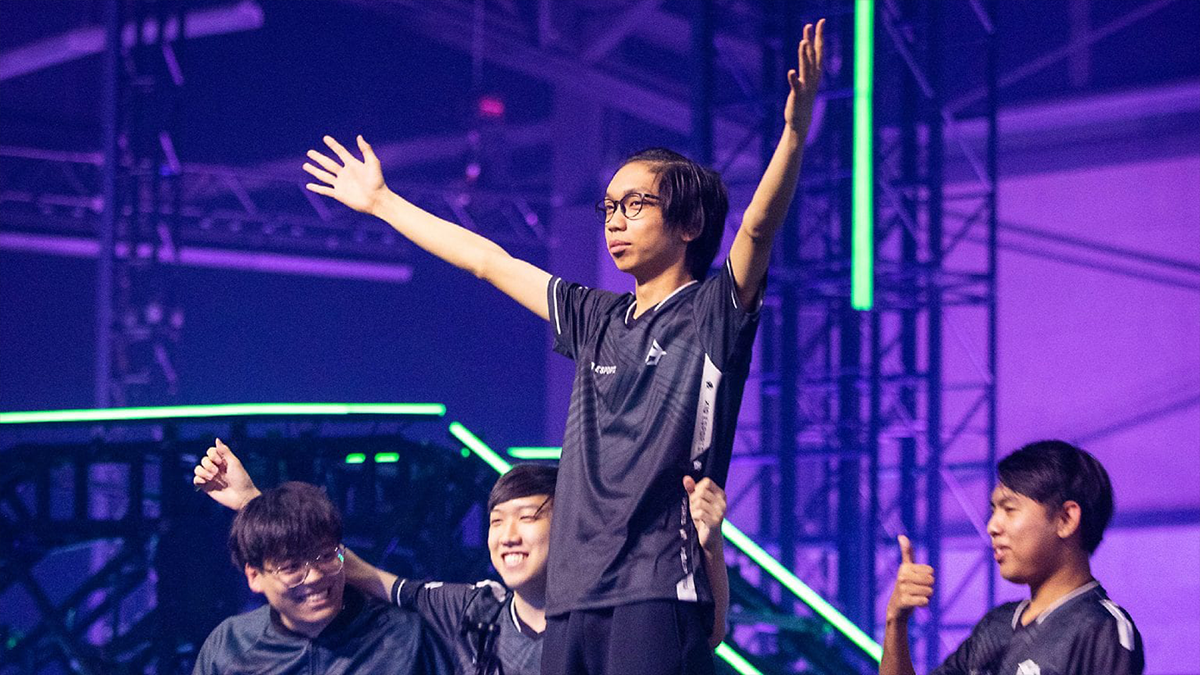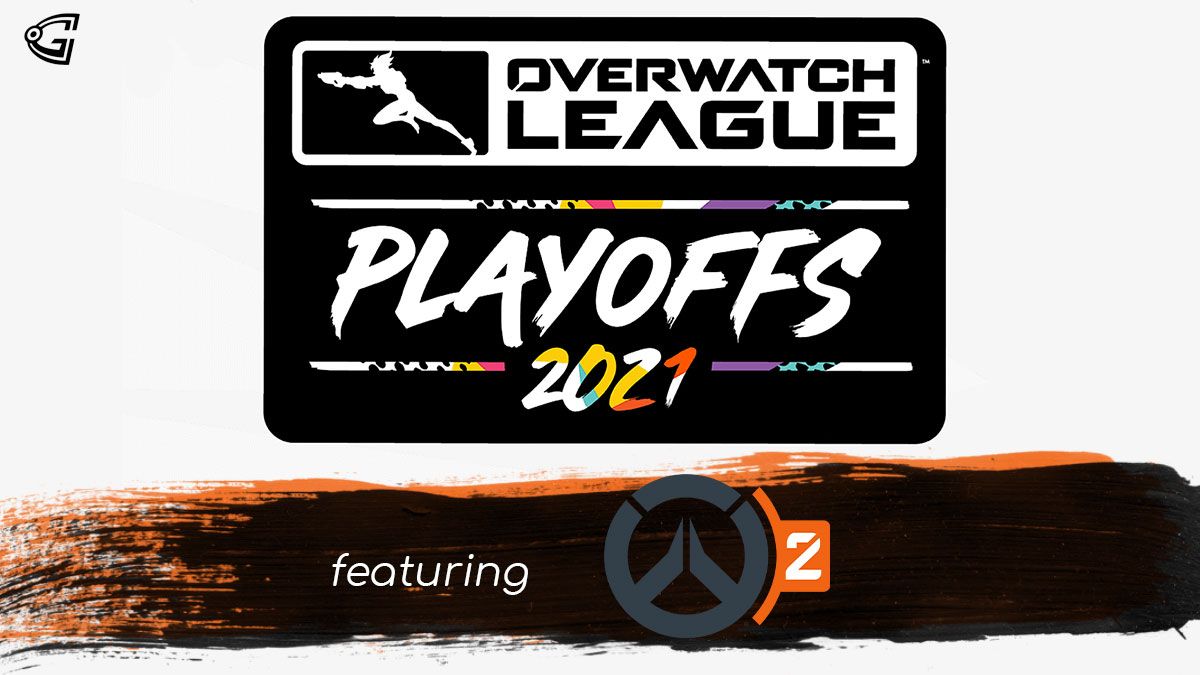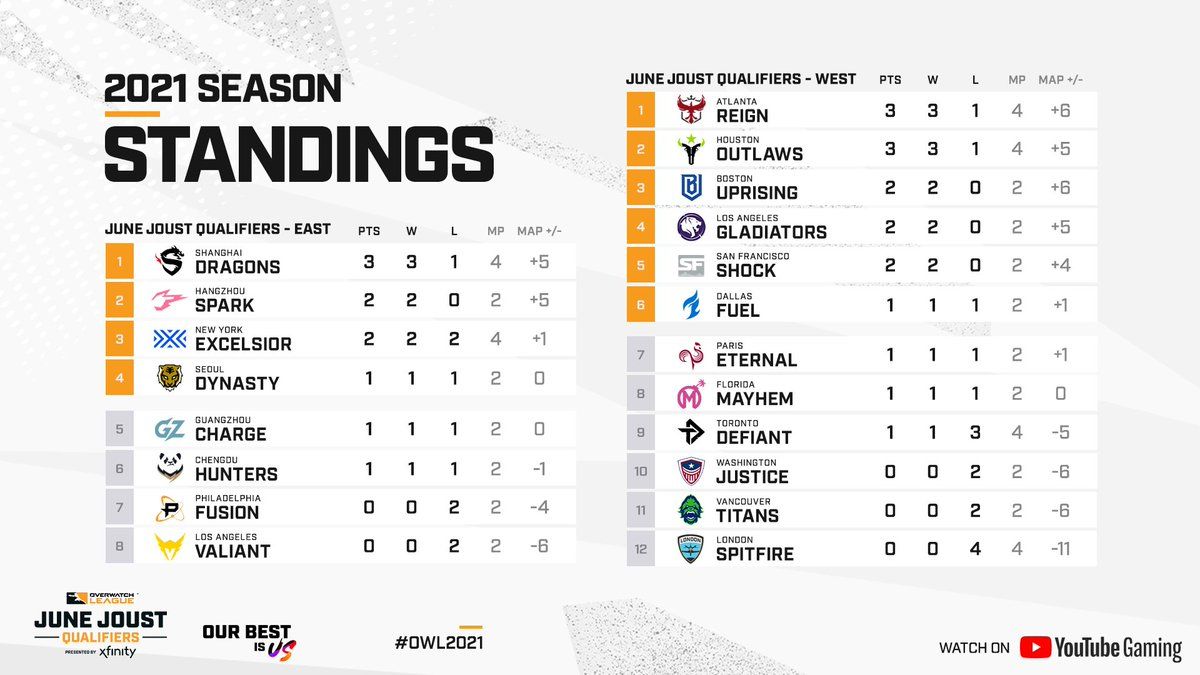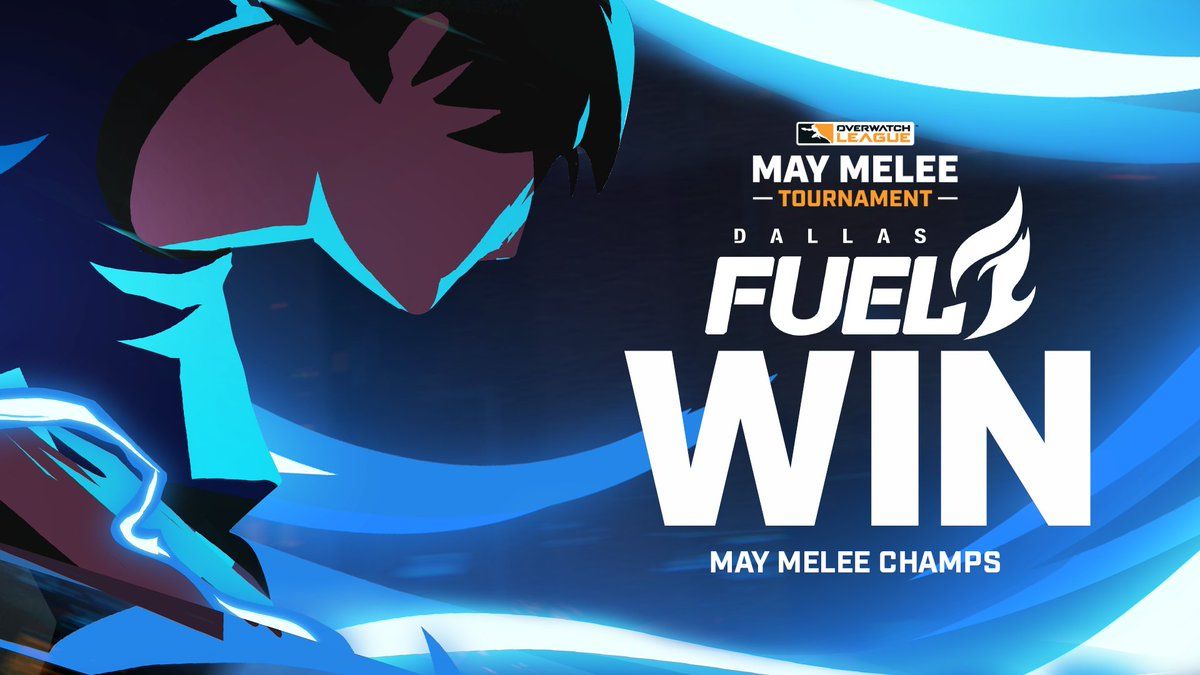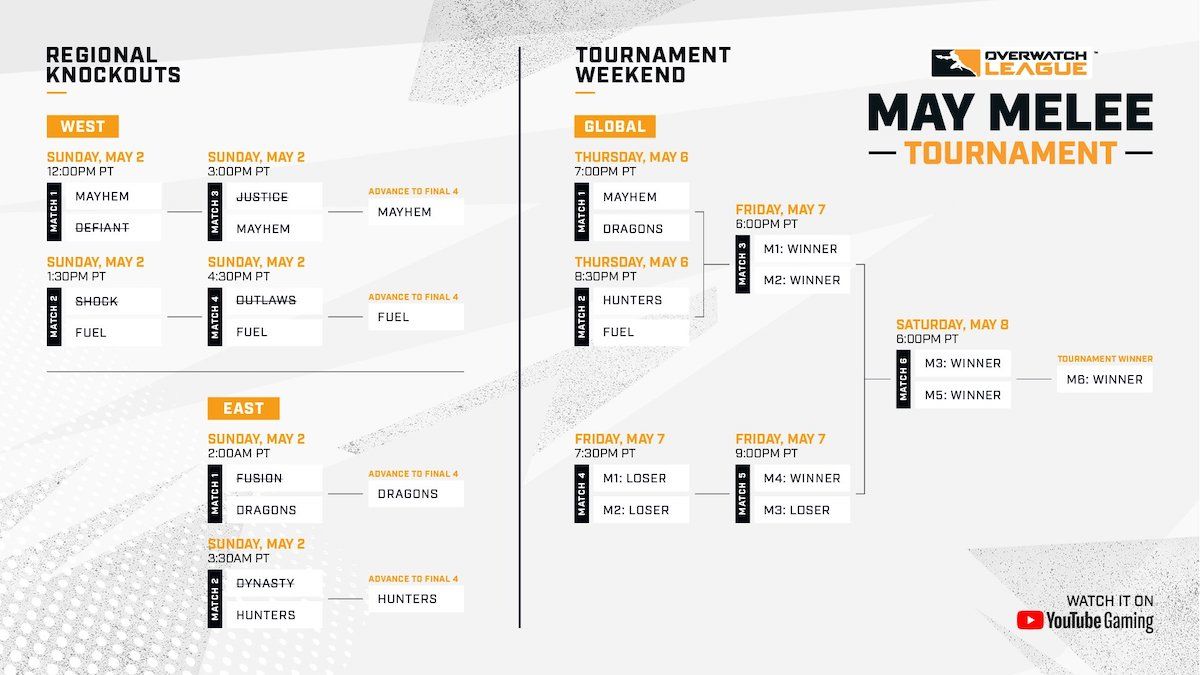?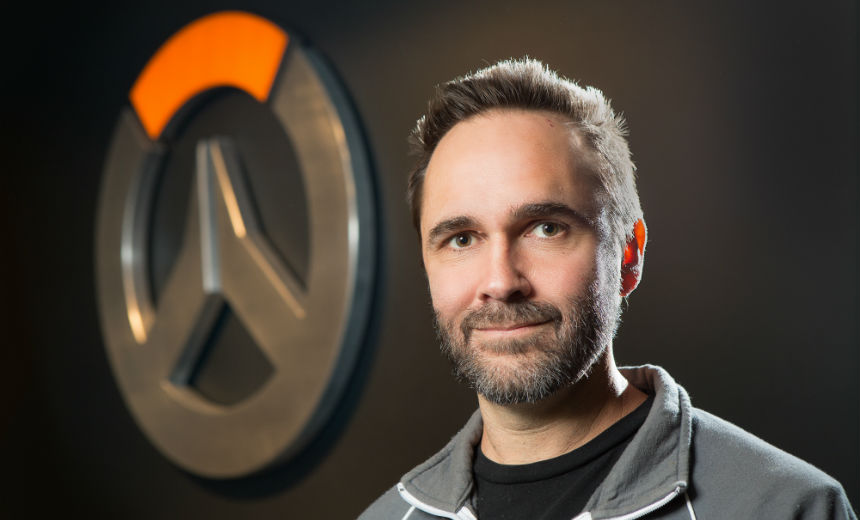
It was clear after talking to Aaron Keller that the guy loves making videogames. Many World of Warcraft aficionados know him from his early 2001 work designing many of the most beloved vanilla cities, but the future generation of gamers might better recognize him for map design in Overwatch. During our talk, he explained how every one of his levels starts with a road, and even though Overwatch is an FPS game, he still can't help but want players to explore the levels, almost as if it was an MMO with secrets and valuable areas hidden around every corner.
One of the first things he told me before the interview started was how much of a fan he was of GosuGamers and the competitive Overwatch tournaments we put on. I knew then what my first question would be:
First of all I think it's really cool that you're a fan of GosuGamers. Can I start with that? Have you guys watched a lot of competitive play? Is this how you thought it would kind of blossom or is it different in ways?
I personally was a little surprised at how fast it took off. To see the competitive scene grow up, especially with GosuGamers, and see the tournaments that take place almost daily now...they're happening all the time, and then the level of competitive play and skill that some of these people have is shocking to me.
And so like, early on in the project, we would talk about what's going to happen when a pro player picks up Tracer. What are they going to be able to accomplish with this character? So to actually see it in the hands of really good players has been one, really inspirational, and two, really informative. We have made balance changes based off of the different play that we've seen and the different comps that we've seen happening in these tournaments.
If you haven't seen his streams, one of the players I recommend is Seagull.
From the Genji play? In Lijiang Tower? That video went around the whole team. We were talking about that one for days. And the thing is, when I'm watching it (because I'm not as good as these people) there's a moment when a Symmetra is up next to him, above the point, and he's got the drop on her. He can take her out, but he knows he wants to waste her ultimate. So he lets her put the teleporter down, waits till she leaves, then destroys it. I was shocked at that moment-- and then he goes in and just murders the entire enemy team.
It actually really is incredible because he has the discipline to not do anything. I never feel like that when I play. He was actually silent and stealth-- it was so cool.
Yeah, it's so weird. This is weird. I'm no longer in like, interview mode right now. I'm sort of in let's geek out about Overwatch mode. But yeah, it was awesome.
The match in question featuring the amazing Genji play. Symmetra moment at 2:50.
Well you know, I feel actually that's what GosuGamers tries to bring. I try to show that in a lot of the content we do. Because our readers are arguably the people that love the game in a way that is... a little obsessive.
[Laughing] Yeah!
In a way that's like-- Oh my god, this balance patch, I'm gonna look at everything, and I even wanna search for things that may not be there.
Can I respond to that for one second, though?
Yes, please do!
Because it's kind of the way the developers on the game feel about this game-- like you know who Jeff Kaplan is?
Yeah.
The dude's playing the game every single night. We go home and we play this game, and I'm like, in love with the characters-- the different heroes in the game. Then we'll come into work the next day, and we'll geek out about the big moments we had the night before, just like gamers do about the games we love. Like, 'I can't believe this moment with Zarya last night in Dorado and you did this' and we're just kind of like, going for it.
So yeah, we're so passionate about this game that we're making, and I feel so fortunate to be working on a game that I love to make, and also that I love to play, all at the same time.
Yeah-- that's actually a really cool thing that you brought up, because I've heard that in other interviews about other Blizzard games. It's kind of like you developers and us fans are playing the same games-- we're seeing the same things.
Exactly.
Do you have any moments in which the team having that experience has made you find things that 'Oh, that's not quite how we wanted...because we were playing, and it's not fun to lose to, say, 3 Bastions on this choke point with regards to a map or something
Yeah, we've definitely had stuff like that. I remember early on in the project we held our first internal tournament, just for the team. And we actually had a couple of the guys on there-- some of our engineers shout casting the thing. It was really cool because the entire team would stay late-- we held it after hours-- but the teams would stay late, and then the whole team would stay late and just watch this thing.
I was in the finals of it. My team was-- I was so excited-- I wanted to be the first World Champion of Overwatch [laughs]. Ray Grasco, our executive producer-- he was on the opposite team with some really good players, and they did this strategy where they came out with five Zenyatta's Reinhardt . And at the time, Zenyatta's healing orb would all just stack on this guy, and he came out, and we just couldn't kill the dude. And we're trying everything, and right at the end, we're like 'everybody switch to Bastion', but it was too little too late, and they took it.
They also had a strategy in the same tournament where we called it the Quinston, which was 5 Winstons. So the Quinstons come out and dominated. We've made changes based off of all those weird, little silly strategies that people have come up with.
I still can't help but want people to wonder what's around the next corner, and go over there. I still can't get away from that.
Do you ever have to curb your teams personal biases towards what should be changed? Like any personal distaste for a particular style of play that someone else would enjoy?
That's part of it, and one of the things that's tough. What's been so great about the beta is when you're playing internally on a team of developers, you have a lot of different skill levels--it's not that big of a team, so in one particular match you'll have some really top-tier guys who can even hold their own with top-tier guys in the Beta, and then people that aren't really shooter players. So it's all kind of happening at the same time.
Sometimes it's hard to get the best feedback out of that, but then you throw it into the Beta and see-- here's a bunch of low level players all playing with each other, or here's a bunch of top tier people all playing the game at the same time, and we've been able to make a lot more nuanced and better balance changes because of it.
Speaking of those changes, we've seen some subtle balance changes that most people wouldn't notice, but they have huge competitive implications. I'm talking about changes to health pack locations and opening up different pathways on different maps. What are the things that cause you to make those subtle changes ?
There's a couple of things. I mean, we're collecting statistics all the time on winrates on maps and things like that, and that's one side of it. The other side is because we go home and play the game most nights. I think we get a lot of the same highs and lows that the community does too, and so, one of the maps that were changed pretty decently lately was Temple of Anubis.
We did health pack changes, but we also changed the way that the choke worked at the second point, because one of the things that we realized was that, when the offense feels like they have no point of breaking in on the assault maps, it can be one of the most frustrating experiences in the game.
And this is really something specific to assault maps, so we started loosening up some aspects. The balance has always been hardest on assault maps. Volskaya Industries, actually, feels really porous, and even if I'm being held for 8 minutes on that second point, I typically don't get incredibly frustrated with it because I always feel like I have options.
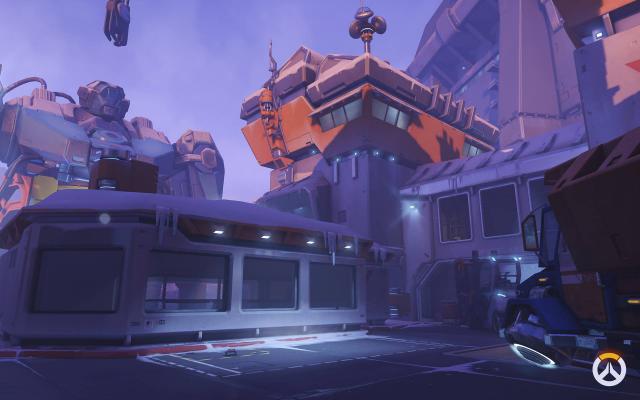
Yeah, there's all sorts of avenues.
Yeah, and so we wanted to start bringing some of that into Anubis as well to just alleviate some of it. I think it worked a little bit. The health packs worked a little bit in order to give the offense a little bit of a boost there, and now the offense is actually winning more in Anubis than the defense is.
You said the word 'porous' when describing a map that was successful. That really made me think: what in your mind, what makes a successful map? Like when you play it, and you make it, and you're done, what makes you say 'this is my seal of approval'? What are some of the core characteristics you personally bring to battleground design? Is porous one of them?
In some parts, it is.
Because this game is about the Heroes, not really about the maps, you know? So you want to give enough spaces in these maps for heroes to feel special, and they have places to shine. Like the backstreets of King's Row right after you get the payload and you go through that section-- that was really designed with heroes like Reaper in mind, and just flanking guys.
And I always want there to be circles or figure 8s-- these loops that harassers and people like that can be using. So that's one part of it-- I want heroes to feel special in a map. But then, the other side of it is that it's a team based game; you need those moments where a whole team can get together. That's where the amazing Overwatch moments actually happen. So both those things together do a lot of it.
I had something else that I was going to bring up too at the start of that...
I brought up the word 'porous'.
Yeah.
And the fact that you immediately brought up, 'Oh, Volskaya-- that's really good.' What makes that really good?
By the time a play test is finished, if it's like Widowmakers and Hanzos on both sides, and if that's what everyone's playing, you kind of know you've effed it up.
It's a good question.
So, one of the things we try to do is always give players a main route. So here's the way I go if I don't want to get lost, or if I want like a really direct way of getting somewhere. And then we try to give enough alternate routes there. It gets really tricky when you start designing those alternate routes, because you don't want them to start far enough back for an attacker to where they can completely circumvent the entire defensive team without ever showing their face there.
But you also want the offense to feel like it has options. You want the defense to feel like they have options to come out, and maybe flank and harass the offensive team. So we kind of get into the nitty gritty of exactly where those paths start, and where they end, and how much an offensive player really needs to show their face. And I think that-- to me, is why i really like the second point of Volskaya.
But one of the other things that I think makes a map successful, especially our non-symmetrical maps, is there's almost an escalation or a flow through different parts of the map, as like a narrative for what the match is. So if you look at Temple of Anubis, I really like the way the first point plays sometimes, because a team will hold the first choke, and it's typically hard to hold for a long period of time-- you might hold it for a minute or two. And then you fall back to the actual objective itself. And each team kind of feels like something's happening there.
The offense feels like, 'Oh we're making progress through this thing', and the defense is like, 'Okay, we held them for a little bit at this first area, so now we want to see if we can hold out the whole way on the objective. If we can't, hopefully we've wasted enough time to where we can stop them at the second point.' And I really like to see stuff like that happen in maps. And I brought up Volskaya earlier because the first point can fall pretty fast.
So we've been making subtle changes. Health pack changes, tuning how long things take to capture a point in order to try to get some of that feeling into Volskaya that we have in Point A and Anubis.
Whenever I want to try to carry on Volskaya, I pick Tracer, go on the left and do that little shortcut you can make with her Blinks. Once I land, I wait. I wait there, because then everyone usually hangs back a bit to check that entrance, and then move on. After that happens, I go in and start pressuring the point.
That thing still keeps me up at night.
It's dirty, yeah.
That is the one thing in the game where I'm so unsure if that was the right thing to do. It makes you feel as an offensive player incredibly special and powerful. Like, here's this route made just for me. So you go and turn the whole defensive team back just to deal with you. And it's so effective and so cool.
But then on the defensive time, you're like, 'Oh man that effing Tracer-- I knew he was back there on that point.'
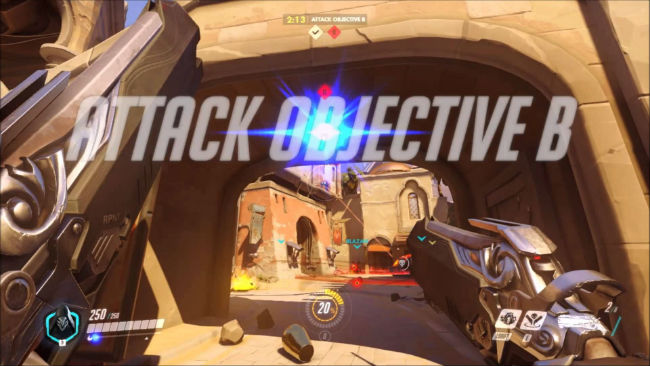
We've been talking about offense vs. defense, and we just mentioned how it's the ideal situation where both feel like something is going on. But as you guys are trying to balance and make this thing work, was there a side that seemed to dictate where the imbalances stemmed from? Has it always been easier to push, or has it always been easier to defend? Was there ever a point in which it was uneven?
It's actually uneven right now depending on the skill level that you have. Like, at your site, the tournaments players are all really high skilled. I'm sure the readers at your site have a lot of knowledge and understanding of the game. They might be on the side that feels like pushing is easier.
But when you think about it, if both teams do absolutely nothing in a match, the defense just wins. And that's what you see a lot of times with people just getting into the game. It becomes really hard for the offense to win. So we actually have this big spread in our statistics where at the high end the offense wins more, and at the low end the defense wins more. And so it's a really tricky balancing act to try to get both of those together because it can feel really frustrating for new players of the game to attack in something like Temple of Anubis if they're just beating their head against the wall.
For a while it was really bad. I think the lowest in the bar attackers have like a 30% winrate. And so we've been doing changes, and what we're really trying to do to narrow that band as much as we can. If we can get everything perfect to 50/50 we would do it. If we could balance it for all skill levels, we would do it. But for now, we're talking about balance changes that we could maybe accomplish that-- we'll see if that goes anywhere, but that's sort of been the trick so far.
That 50/50 goal is something I hear a lot about in Heroes of the Storm. One of the interesting things about their development team is that they're okay with certain heroes being bad on certain maps. They're okay with that dynamic. Is this something that you guys are okay with in Overwatch? Are there some maps certain Overwatch heroes are just bad on?
That dynamic isn't for us, doesn't mean that it doesn't happen though. I think that what we would prefer is to say that, I really like this hero on this part of the map, and it might not be as effective on this other part of the map. Because I think that this adds a lot of depth and strategy to the game, especially for higher level players. That being said, you can see in the competitive scene that there are some heroes that are almost default picks on a lot of the maps, or across all of the maps. And I'd prefer it if we could get a more balanced set of picks for a lot of the maps, and it's something that we strive for. I don't know if we'll ever be able to get it perfect. But it's one of our big map values. And we've had maps or even hold game modes that we've thrown out over the course of the development because some heroes just weren't effective in them at all.
We knew we wanted to have short range and really long range classes, but if all of our spaces were really big, a character like Reaper almost couldn't exist.
So, and I guess to elaborate on my point: If I'm understanding you correctly, the concept of a niche hero that has powerful spikes of effectiveness and low drops of uselesness -- that's not where Overwatch is headed in terms of it's balance?
No, I tend to avoid that. I love it, however, if there's a spot on a specific map that a hero does well on. Like if in our control maps, we're on point of Lijiang, and this is the point where people love playing Mei or whatever hero it is. That's fine. But I'd hate for it to be like, you're never supposed to pick this hero on this map.
Yeah, some competitive staple where you get flamed if you don't pick-- like oh, you're a noob. I've heard and I've read that some of the things that you're most cautious about are sightlines. How much of a struggle is it to make these maps that are inherently dynamic and rich? Not every map has to be a maze-- but how hard is it to balance it with heroes that really take advantage of those sightlines?
It's one of the hardest parts of making maps on Overwatch, and there's a couple of reasons for it. This isn't even a gameplay thing, but on one side, there's an art component to the map. And the environment artists always want to show a big vista, or hey, here's this big object in the middle of a map. And the only way to show stuff like that is to get kind of far away from that and see it. So we struggle a lot even on that side, because we can't have giant open spaces in this game. And early on, we put a ton of time into figuring out what our scale of engagement distance is.
We knew we wanted to have short range and really long range classes, but if all of our spaces were really big, a character like Reaper almost couldn't exist. When that starts to happen on a project, then the hero designers--guys like Geoff Goodman-- they have to start making changes to the heroes based on it, and they all start getting a little bit diluted, right? Where it's like, well I guess Reaper has to be able to survive in all of the big open spaces we have, and he doesn't have quite the focus that he would have now. So we really tried finding what that ideal 15 meter range would be for a lot of the combat and a lot of the spaces that we can have. And that sort of became the bread and butter of what we started designing around.
And then we started trying to find all the spaces where we could open it up and give longer sightlines into a choke or in different places or in all of the-- god knows how many places-- that players have just, discovered, but the thing that will get us in our play tests early on is if we give too many big sightlines in a map, they completely break down. Widowmakers will just start kind of infiltrating the team composition. And if by the time a play test is finished, it's like Widowmakers and Hanzos on both sides, and if that's what everyone's playing, you kind of know you've effed it up.
With you specifically, you're known for a lot of your maps and these worlds that you create. What is the special "Keller" touch that you put on an environment? Like what do you bring specifically that would make you say 'Oh I'm really proud of this and if I wasn't on this team, it wouldn't exist'?
Wow, that's really cool question. I have a couple things that I really like to do on maps and one of them is I always think of a map as a series of roads, with one main road going through it. and I think that it allows players to learn a map faster. It allows them to kind of understand the whole 3D space better. And some of it's because I come from making World of Warcraft everything is on a roads there, and yeah in Stormwind. And it's weird too, because the way that I usually start building a map, even if it's for something like Stormwind or Overwatch, is I start building the road. I want to know what it looks like.

A game like Overwatch is all about the nitty gritty of what the heroes can do in the maps. Sometimes even just a crate a particular place or what the sitelines are like can influence a player. I still can't help but want people to wonder what's around the next corner, and go over there. I still can't get away from that. I hope that people look at Overwatch as a top tier shooting game, but then I also hope that they look at it and be like, what is the rest of this world is about? And what is the universe of Overwatch. And if I could just fly over that area in King's Row and get to that glowing blue city in the background, what would I see over there? Yeah, so I want that.
I think you may have captured that feeling in a lot of the map. In my experience, most players travel down the main road to whatever capture point they are fighting for-- that's where all the action is. But sometimes you see a player go around on the side and travel through the least populated rooms. Especially on the Control maps: why would you ever go in the far right corner of a room near the enemies spawn side?
But if you put like a Widowmaker there, and all of a sudden you're sniping the team from behind in an angle they couldn't of predicted. it's one of those nooks and crannies that you only get from exploring the map, and sometimes they can be extremely competitively viable. Even though it doesn't need to be there because no one really goes there-- those types of things wouldn't happen if it didn't exist.
Yeah and you still want it-- it's really interesting you say that. When we do our initial map design, we'll do these layouts, and we kind of throw it out in front of the team. And when we start playing it-- a lot of the initial feed back is the map's too big. And people ask: 'what are these routes doing out here?'
I mean we get it on every single map-- people say stuff like that. When you first play it, you're sticking to the main routes, and you're trying to learn it, and then months later, you'll get the opposite feedback-- like, 'hey, I wish there was one more route over here' because you finally understand all of it to where you can utilize the whole thing.
When you're getting so hopelessly outmatched, a lot of times what you do is you look towards the map. And say listen, I've gone down this pathway 10 times and gotten killed every single time, time to try something unexpected.
It is kind of funny, because in a really even match you don't need it. But we said early on, we have to have multiple exits of the spawn room. And that was Temple of Anubis-- we have that big Sandcrawler thing for the attackers, and there's all sorts of ways out of that thing. And the funny thing is, you use that main one 99% of the time, but you do have to have the rest of them just in case.
Now this next question is just kind of lanservice for some of the readers. You designed the original Stormwind in World of Warcraft and that is awesome. Were you aware there was once a way for players to make it on top of the roofs?
The roof of what?
The roofs of the whole city. I remember there was one guy on my server that figured it out and he was literally yelling in the city, 'Hey everyone, get over here', and before I knew it there was a train of at least 100 people trying to make the same jump. And sure enough, we got it, and we got on top.
That's so amazing.
When you see that are like, 'Aw, no! They broke my map!' or is that like, 'Great, please break the map!' Do you support us poking around in efforts to break things?
I love stuff like that.
It's sort of like that emergent behavior that happens in a multiplayer game. Especially a game like World of Warcraft. You can see, like, there's so many cool things that happen like that in WoW. When all the gnomes decide to invade today, or something other things that players can do to have fun. We had to fix stuff like that, mostly because of the way Stormwind was constructed, and how fake a lot of it was when we initially built it.
But as a philosophy, we want players to feel powerful and to feel like the world is theirs to explore.
Since then, the team has built like, the newer, stronger, better version of Stormwind where you don't have a lot of those same problems that it was when I first built it. But, yeah, I like seeing stuff like that. I like seeing stuff like that in our Overwatch beta.
Like, hey, we have that practice range there, and some player figured out how to get all the way out to this lighthouse way in the background
Really?
Yeah, it was really cool. Like I was actually shocked the way she did it, because it's just like a series of feathering your jets using your shift ability to go farther and then feathering them some more. But she would then also use her ult, and so she would ult in the middle of the air and then let her jets recharge, and then she could go further-- it was so awesome!
That's some fine cheese.
Yeah, we had to stop that one too, but I still love seeing it.
Are you guys aware of what Widowmaker players are doing with their hook when they go underneath the maps like on King's Row?
Yeah, love that.
It's actually really cool if you see the top Widowmaker players utilize the hook. They sometimes aren't necessarily trying to land on anything, instead they are just trying to swing your--
The hook and the jump?
Yeah! it's so incredible. And then they still make snipes when flying in the air! Are you okay with keeping those things in the game?
Yeah, there's a lot of things that we're okay with keeping in that people find. The only times we would do it is if it causes some other issue or some other bug to surface that we have to take care of. And every once in awhile there might be like well, there's this bug in the game, and by fixing it we might be losing something like this. But as a philosophy, we want players to feel powerful and to feel like the world is theirs to explore.
Last question- what map and hero do you feel are made for one another? Like a fine wine and cheese selection, what should everyone try at least once?
For me it would be, it's probably either Reaper or Tracer in the middle section of King's Row. There's something about the harass that you get to do there, and all the loops you get to run. I love how that feels, probably because that's how I wanted it to play. So maybe every time I go in there I'm like feeling some sort of sense of satisfaction in myself.
Affirmation a map builder can appreciate.
Exactly!
For or more competitive Overwatch news, follow us on @GosuOverwatch.


